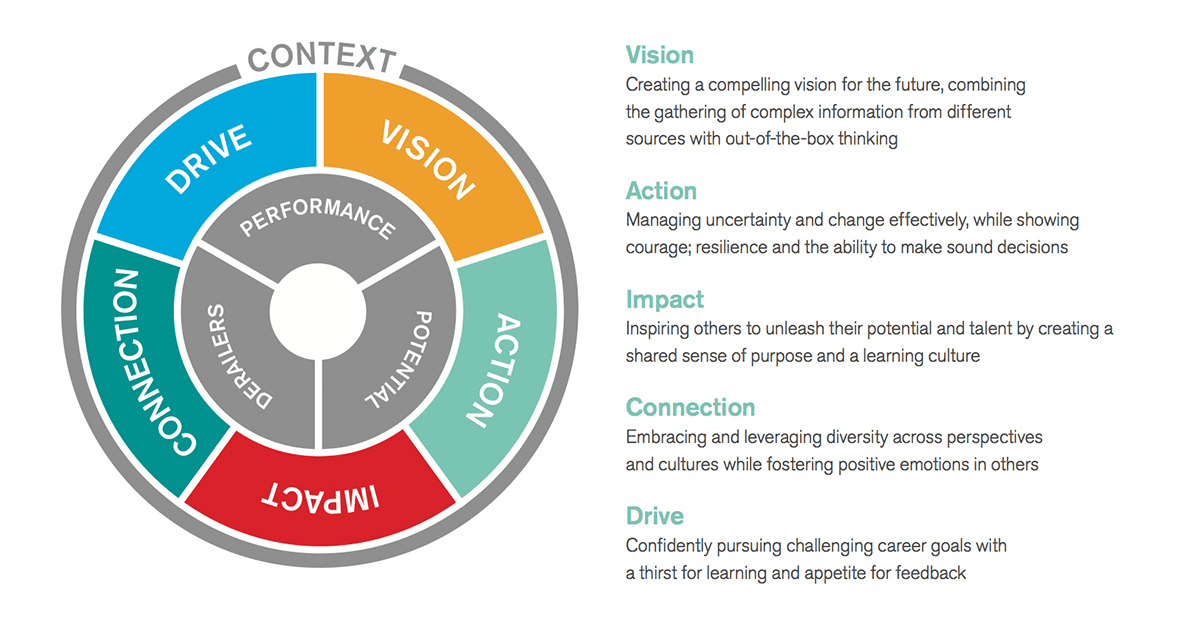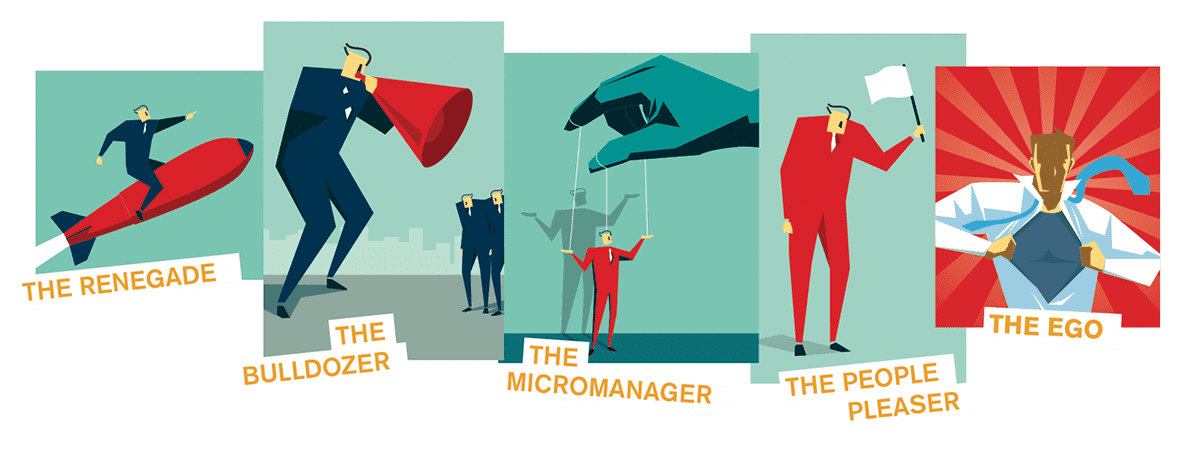Leadership: Business scenarios: the most important leadership strengths

The most important leadership strengths for four different business scenarios
A politician achieves mass popularity due to a strong vision of the future, but fails to deliver on key promises.
A football coach leads a struggling team to victory, but gets fired the next season as the team can’t maintain their winning streak.
A manager delivers on a major project, but most of the team quits within a year.
I’m sure we’ve all seen people who clearly have exceptional leadership strengths, yet are ill-suited to the situation they are in.
You don’t have to look far to find thousands of books and articles about what it takes to be a great leader, but what’s often overlooked is that different leadership strengths suit different circumstances.
Having a leader with strengths that are mismatched to their business context could lead to serious consequences for their organisation – especially in such a fast-changing business world that we’re in.
To illustrate this, I’ve put together four common business situations and the leadership strengths that best match each one. But first, you need to know what the different kinds of leadership strengths are.
Defining leadership strengths – and derailers
Hudson’s registered psychologists and world-class R&D centre based in Europe have developed a leadership model that can be used to map an individual’s leadership strengths.
Hudson’s Leadership Blueprint focuses on five key elements: Vision, Drive, Action, Impact and Connection.
The model is designed specifically to focus on what is required of leaders in today’s uncertain business environment and is also underpinned by our own empirical research and global consulting experience. The Leadership Blueprint is a practical framework for organisations to define their unique leadership strengths, in context, and identify, select and develop leaders against this context to ensure they are ready for the challenges of tomorrow.
While all five leadership elements are valuable, most people aren’t strong in all five elements.
What’s more, as leaders move into more complex roles and are placed under increasing pressure to work harder and deliver faster, they can overplay their strengths or have difficulty controlling their more extreme preferences, which can turn into derailers:
For example, an Action-oriented leader, under stress, may have a tendency to become an insensitive Bulldozer who lacks awareness of people and their feelings in order to get the job done.
Four common business contexts
Given that most people are only strong in certain leadership elements, it’s important to match these strengths with what your organisation most needs, depending on your organisation’s size, financial situation, competition and culture. You may also need different leadership strengths in different roles and teams.
Here’s a simplified summary of what could be the most important leaderships strengths – and most harmful derailers – in four different business contexts.
- Organisations undergoing internal cultural transformation. Most important leadership strengths:
Connection & Impact. In order to successfully drive change in mindset and behaviour during a major cultural transformation, the leader needs to have strong Connection skills to galvanise the people. Impact is important too, because you need to influence, tell a compelling message and communicate authentically to gain buy-in and retain people, while also demonstrating empathy to those finding it difficult to adjust to their new environment.Harmful derailer: Ego
Such organisations will do well to watch out for leaders with a tendency to focus on fuelling their own Ego and act in a manner that helps them stand out. While it is important to have drive and ambition, undertaking transformation requires leaders to attract followers through positive emotion, respect and social intelligence. Appearing overly competitive or self-centred is likely to have the opposite effect.
-
A start-up. Most important leadership strength: Vision. Vision is likely to be the most important aspect of leadership for a budding business. A leader needs to start by contextually mapping out where they are in their journey and creating a compelling roadmap for the rest of the organisation to follow. Leaders need to have the mental flexibility and agility to navigate obstacles, synthesise new market information and think outside the box to achieve their goal.
Harmful derailer: Bulldozer
While taking action and focusing on results is important for any leader to be successful, an over-reliance on results when establishing a start-up could derail a leader because a start-up needs to make a few mistakes along the way. Rather than bulldozing towards results, a leader needs to keep an open mind while steering the company towards the vision.
-
Public sector organisation seeking to improve customer service. Most important leadership strengths: Action & Connection. Action is likely to be an important strength to drive decision-making and changes to systems and processes. By this point, the organisation should have a vision, so what’s needed is someone who can make things happen. In addition, it will be critical for leaders to have strong Connection skills and to role model empathy, respect and social intelligence with a diverse range of customers.
Harmful derailer: Renegade
I’d advise for leaders with a Renegade derailer to be extra careful as there is a risk they may be headstrong in their own ideas for improvement and may not be aligned to the broader corporate objectives. While there is a time for out-of-the-box thinking, this will be the time for everyone to be on the same page, to understand the priorities, and drive consistent changes.
-
Organisation facing industry disruption. Most important leadership strengths: Vision & Impact. Amidst uncertainty and industry disruption, Vision is crucial as leaders need to grasp where the external factors will impact the business. A leader needs to establish what the organisation will do, whether there will be acquisitions or a completely new solution or product, and to think in an agile way to decide whether the organisation will keep going in the same direction or do something radically different. Impact is also required to create a shared sense of purpose and support your people to transform and adapt to the new working paradigm. Leaders need to recognise that while the skills they require from their people today are not the skills they need tomorrow, it does not mean that the people they have are not the people they need – they need to identify talent, recognise transferrable skills, help their people unleash new talents and encourage re-training to be effective in a new world of work.
Harmful derailer: People Pleaser
Leaders with People-Pleaser tendencies will be challenged when they have to make tough decisions about the viability of a business unit, team or role. As a leader you need to ultimately do the right thing by your people – this includes recognising when something is not working, or when talent is misaligned and courageously taking action. Leaders with a People Pleaser derailer can focus too much on being liked and will need to be encouraged to shift their mindset to be respected.
Which leadership strengths does your organisation need?
If you’re in a leadership position, you may find it valuable to reflect on your leadership strengths and how they manifest under pressure, so that you can be aware of how you might derail and be better prepared to manage that.
If you hire leaders in your business, I would challenge you to ask: what are the capabilities we will need in one year’s time? Three years’ time? Just as business contexts change, a leader who seemed perfect during one season may be less suitable in the next.
Don’t assume that just because you have strong leaders that they are automatically suited to your business situation. And just because someone has excelled in a previous role or organisation doesn’t mean that their strengths are well suited for their new context.
Ideally, you should map out the leadership elements that your organisation needs and the strengths of your current leaders, so you can establish gaps where you can develop or hire leaders who will best suit your business context now and in the future.


